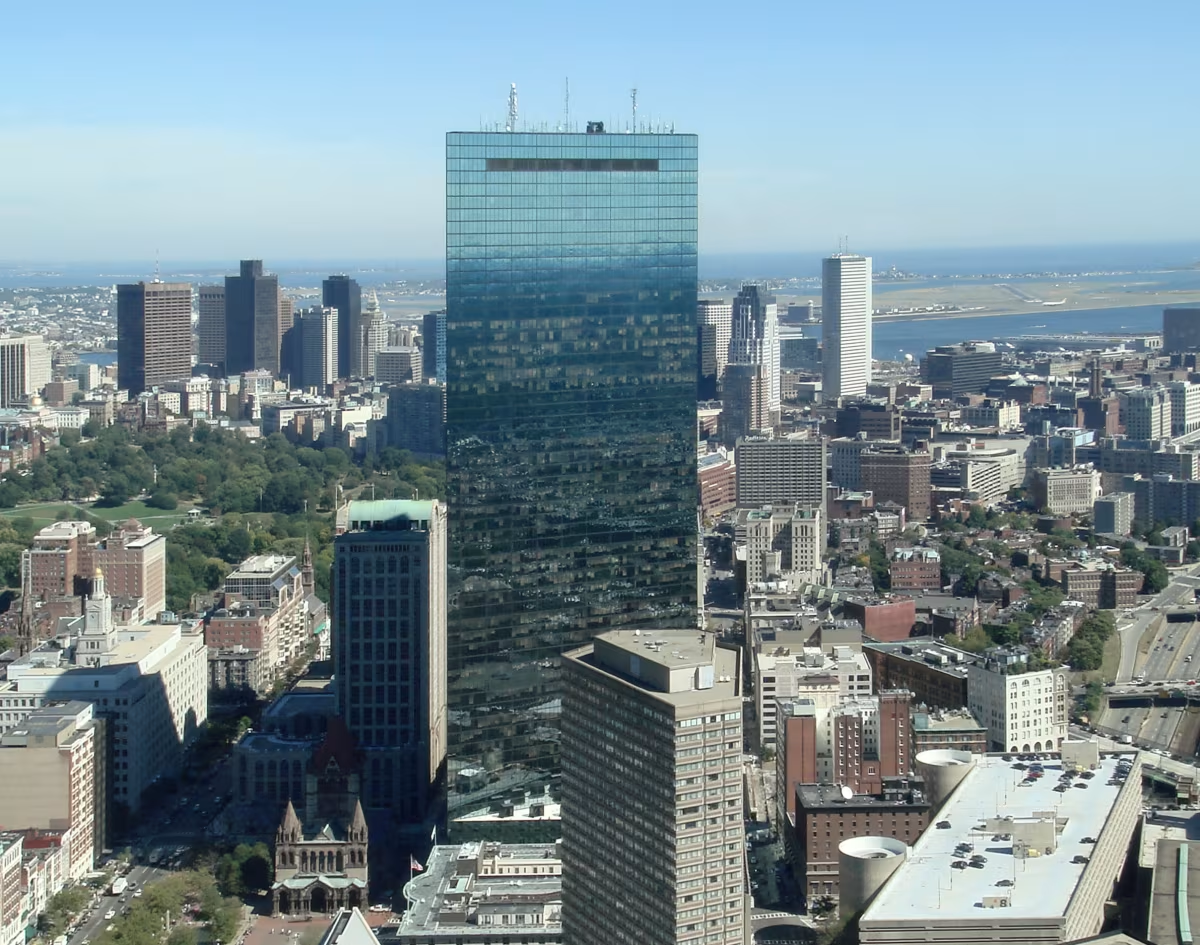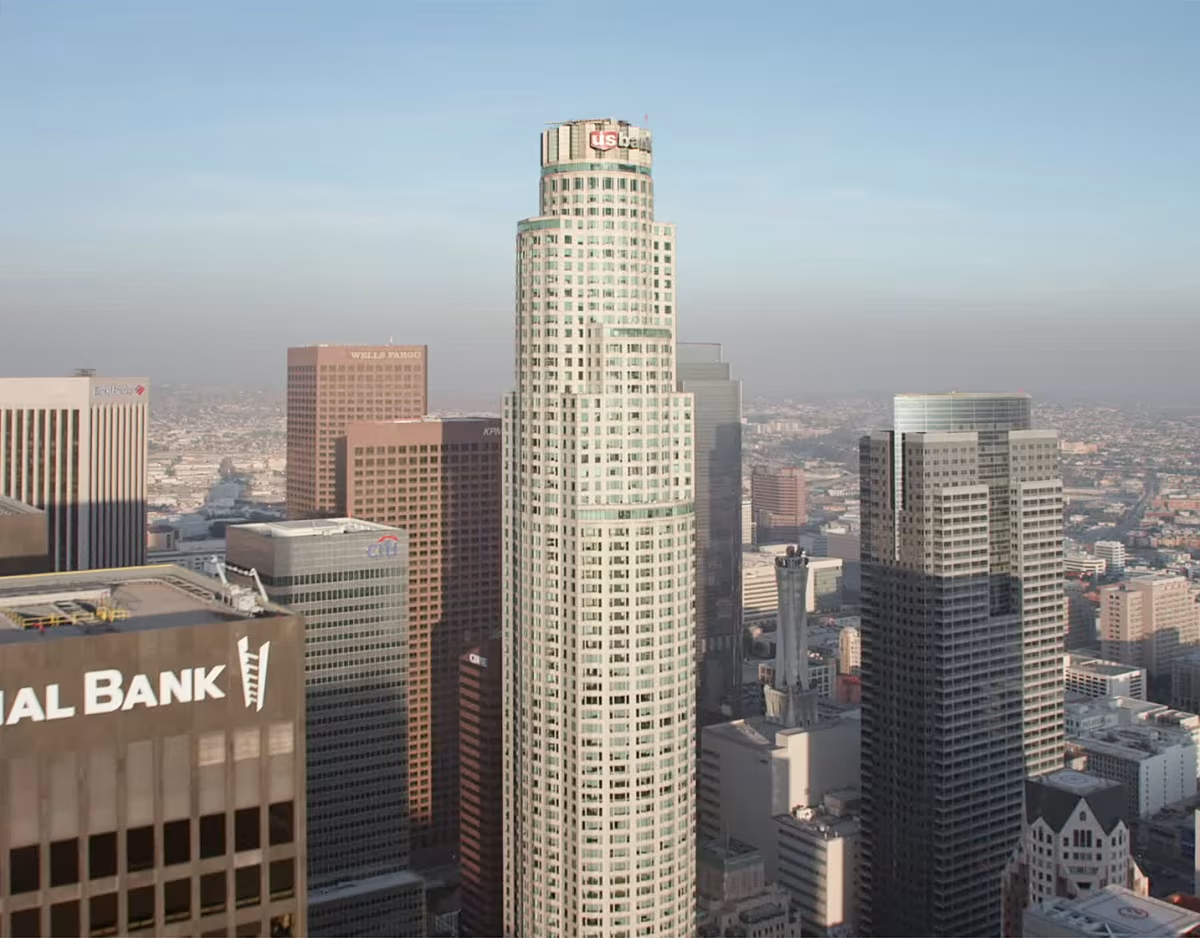John Hancock Tower vs U.S. Bank Tower


Comparing the John Hancock Tower and the U.S. Bank Tower is compelling because they were both designed by Pei Cobb Freed & Partners, yet they stand in different cities (Boston, MA and Los Angeles, CA), and were completed a decade apart.
What this will allow us to see, is how the same firm's approach adapted to different places in different periods of time.
Height & Size
The U.S. Bank Tower is clearly the larger tower of the two, both in terms of height and number of floors. It rises to 1017ft (310m) with 73 floors above ground, while the John Hancock Tower reaches 791ft (241m) with 60 floors above ground.
Despite being taller and having more floors, U.S. Bank Tower has less total built-up area than John Hancock Tower.
By contrast, the U.S. Bank Tower sits on a site with a lower floor area ratio.
Of course, each project may have faced different briefs or regulatory constraints, which we don't really know about and could also explain the outcome.
Architectural Style
The John Hancock Tower was designed in the International Style style, while the U.S. Bank Tower reflects the principles of Postmodernism.
The John Hancock Tower represents a late expression of the International Style, a style already in decline in 1976 when it was completed. By contrast, the U.S. Bank Tower followed the then mainstream Postmodernism, embodying the dominant architectural direction of its time.
Uses
Both the John Hancock Tower and the U.S. Bank Tower were designed to serve as commercial towers, and that has remained their main use since their completion, serving similar roles in the urban fabric.
The U.S. Bank Tower also provides 1396 parking spaces.
Structure & Facade
The two towers rely on different structural systems, reflecting distinct engineering strategies.
The John Hancock Tower uses a Frame structural system, which relies on a regular grid of columns and beams to sustain its weight, while the U.S. Bank Tower uses a Framed Tube In Tube system, that combines a strong central core with a perimeter tube of columns.
Yet, when it comes to their facade, they both employed the same solution, a Curtain Wall facade.
A curtain wall is a non-load-bearing facade hung from the structural frame. It is anchored to floor slabs and transfers only its own weight and wind loads, allowing for sleek, glassy exteriors.
| John Hancock Tower | U.S. Bank Tower | |
|---|---|---|
| Pei Cobb Freed & Partners | Architect | Pei Cobb Freed & Partners |
| 1968 | Construction Started | 1987 |
| 1976 | Year Completed | 1989 |
| International Style | Architectural Style | Postmodernism |
| Commercial | Current Use | Commercial |
| 60 | Floors Above Ground | 73 |
| 2 | Floors Below Ground | 2 |
| 241 m | Height (m) | 310 m |
| 261000 | Built-up Area (m²) | 163000 |
| 21 | Number of Elevators | 44 |
| Frame | Structure Type | Framed Tube In Tube |
| Steel | Vertical Structure Material | Concrete And Steel |
| Reinforced Concrete | Horizontal Structure Material | Concrete |
| No | Facade Structural? | No |
| Glass | Main Facade Material | Glass, Aluminum |
| John Hancock Mutual Life Insurance Company | Developer | Maguire Partners |
| James Rudrman | Structural Engineer | CBM Engineers |
| MA | State | CA |
| Boston | City | Los Angeles |
| 200 Clarendon Street | Address | 633 West Fifth Street |